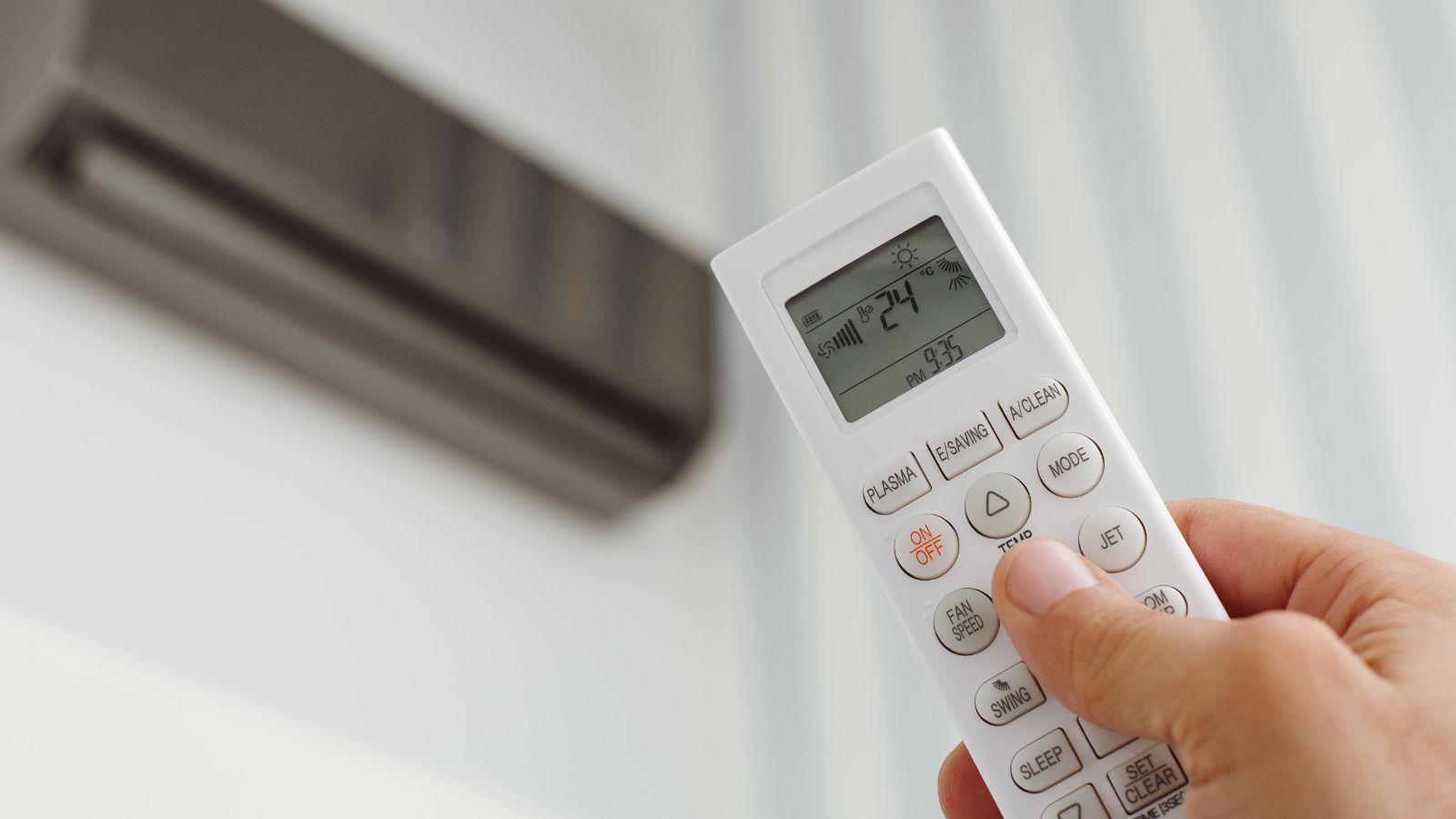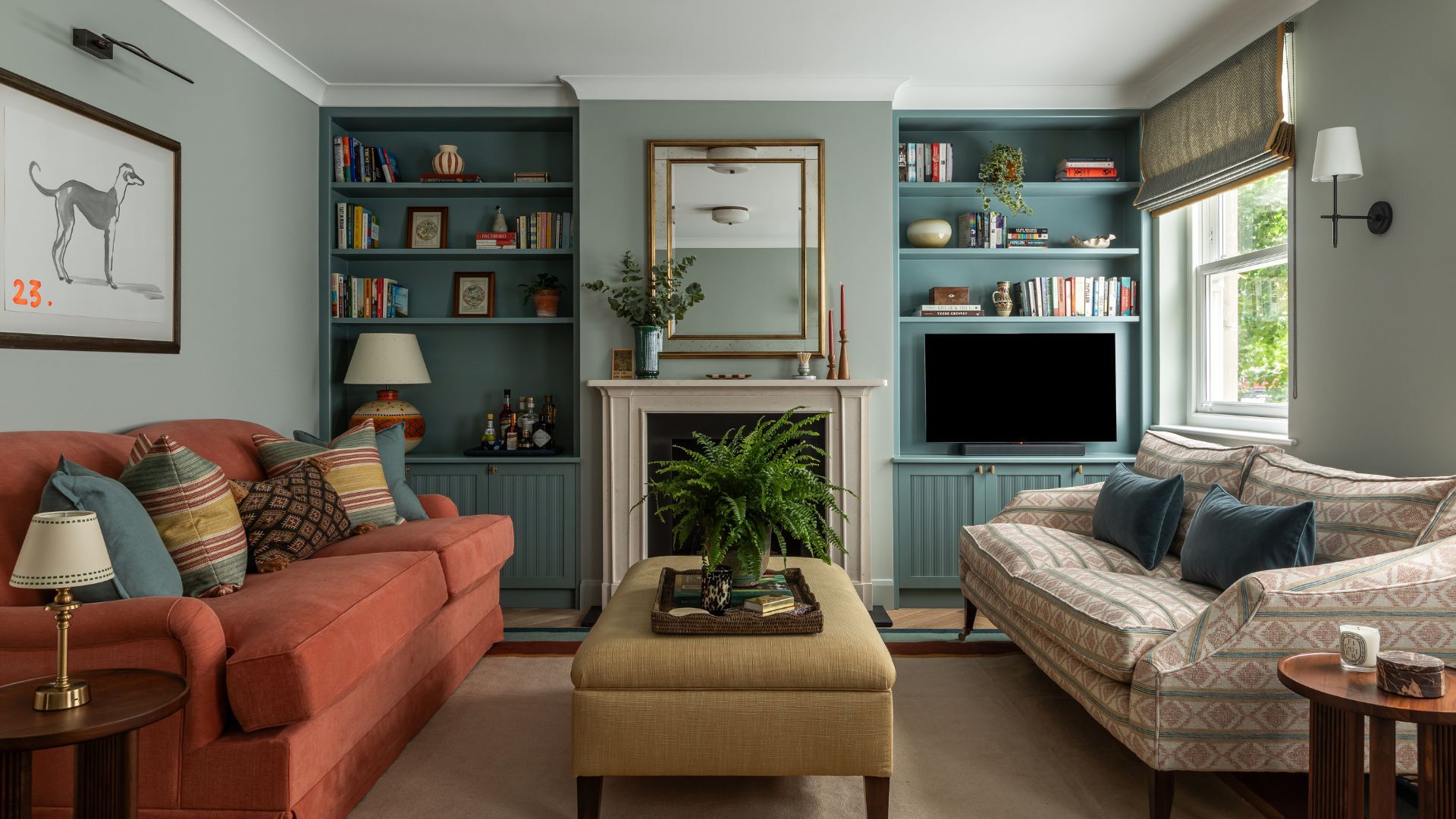How much does it cost to install central air? The price of staying cool explained
Discover what you’ll need to budget


If you need to keep your home cool, and you don't yet have air conditioning, you’ll likely be wondering how much it costs to install central air. Ultra desirable if you live in an area that experiences hot weather at any time of the year, central air can make your whole house feel more comfortable.
The cost of installing central air is dependent on a host of factors, including the air conditioning type you invest in, its energy efficiency, and the size of your home, so we’ve put together a guide that explains all these elements.
Whether you’re upgrading on old and inefficient air conditioner, or installing a new eco cooling system, these are the details on the cost to install central air.
How much does it cost to install central air?
The cost to install central air varies widely. ‘The average cost to install central air conditioning ranges between $5,000 and $12,000, with most homeowners paying $7,000 for a 2,000 square foot home,’ says Adam Graham, construction industry analyst at Fixr.
The central air system selected, whether there is existing ductwork, the square footage of your home as well as its type all count when it comes to what you can expect to pay and this is what you need to know.
System type
A central air conditioner that cools a whole home can be either a split system or a packaged system.
Split systems consist of an outdoor unit and an indoor unit, and can be the most cost-conscious choice when your home already has a furnace.
A packaged system has its components in one unit outside to provide cooling for a home. In addition, there are packaged HVAC systems with furnace plus air conditioning.
As for the cost differences between the two systems?
‘The most common and affordable central air conditioning type is a split system, which costs between $2,500 and $7,500,’ says Adam. ‘A packaged air conditioning system can cost between $3,000 and $8,000, but requires more maintenance than a split system. A packaged HVAC system can range from $8,000 to $9,000.’
Energy efficiency
Air conditioning units are given a seasonal energy efficiency rating, or SEER.
‘SEER indicates the relative amount of energy needed to provide a specific cooling output,’ explain the experts at the US Department of Energy’s Energy Saver. ‘Many newer systems have SEER ratings as high as 26.’
Higher SEER rating units will increase the cost to install central air, and you should be aware that hot climates may require a unit with one of the higher SEER ratings to keep energy costs down.
Home type and size
The type of home you live in also has a big influence on the cost to install central air.
‘Installing an AC unit in a mobile home can cost as little as $3,000, whereas installing central air in an apartment can cost up to $150,000,’ says Adam. ‘The costs related to central air conditioning can vary widely depending on the type of home as ducts may not yet be installed (see below) and multiple units may need to be fed by one system.’
The square footage of a house also plays an important role in costs, as you would predict.
‘The size of the home will have an impact on the costs associated with central air, as the costs to install a unit for an 800 square foot home can be as little as $2,000, whereas a 3,000 square foot home can run up costs of up to $18,000,’ says Adam.
The square footage of a home also informs the amount of BTUs (British thermal units; a way to measure energy) needed to cool it – and that impacts on what you’ll pay.
‘The amount of BTUs required to cool the home will have an impact on the costs associated with central air conditioning,’ explains Adam. ‘The more BTUs required to cool a home, the higher the costs to install central air conditioning.’
Climate
The climate is a further factor in the calculation of how many BTUs are required; the hotter it is, the more are needed.
‘The climate zone the home is located in can have an impact on the costs to install central air conditioning,’ says Adam. ‘A home located in a hot climate will require a larger central air conditioning system, driving up the costs of the unit itself.’
Bear in mind that the home’s insulation and the amount of direct sunlight it receives are also factored into the calculation.
Ductwork
If you don’t have existing ductwork in your home, ducts will need to be installed in order to have central air conditioning, which means a higher bill.
‘Installing central air with no existing ductwork can cost between $1,800 to $3,300 for both labor and materials,’ says Adam.
Additional costs
You may need to factor in another cost to install central air. ‘Some companies may charge a fee of up to $200 to remove and dispose of an old AC unit,’ says Adam.
Can you install your own central air unit?
You shouldn’t try to install your own central air unit. ‘Installing a central air unit is not a suitable DIY project as it requires a licensed professional to be installed adequately,’ says Adam Graham, construction industry analyst at Fixr.
Be sure that your contractor takes the actions recommended by US Department of Energy’s Energy Saver to ensure correct installation so the system is efficient.
Is it worthwhile to install central air?
It is worthwhile to install central air.
‘Central air is very likely to increase home value, particularly for homes located in warmer climates. What's more, central air allows you to live more comfortably through the months of the year when temperatures are high,’ says Adam Graham, construction industry analyst at Fixr.
And replacement of an old system can be worthwhile as well.
‘The most efficient air conditioners use 30 to 50 per cent less energy to produce the same amount of cooling as air conditioners made in the mid 1970s,’ say the experts at the US Department of Energy’s Energy Saver. ‘Even if your air conditioner is only 10 years old, you may save 20 to 40 per cent of your cooling energy costs by replacing it with a newer, more efficient model.’
Sign up to the Homes & Gardens newsletter
Design expertise in your inbox – from inspiring decorating ideas and beautiful celebrity homes to practical gardening advice and shopping round-ups.

Sarah is a freelance journalist and editor. Previously executive editor of Ideal Home, she’s specialized in interiors, property and gardens for over 20 years, and covers interior design, house design, gardens, and cleaning and organizing a home for Homes & Gardens. She’s written for websites, including Houzz, Channel 4’s flagship website, 4Homes, and Future’s T3; national newspapers, including The Guardian; and magazines including Future’s Country Homes & Interiors, Homebuilding & Renovating, Period Living, and Style at Home, as well as House Beautiful, Good Homes, Grand Designs, Homes & Antiques, LandLove and The English Home among others. It’s no big surprise that she likes to put what she writes about into practice, and is a serial house renovator.
-
 Kim Kardashian turns her living room into a 'work of art' with just one furnishing – it's an unexpected masterclass in adding interest to a minimalist scheme
Kim Kardashian turns her living room into a 'work of art' with just one furnishing – it's an unexpected masterclass in adding interest to a minimalist schemeKim Kardashian's minimalist living room is nearly empty besides this one stylish piece – and it transforms the entire space into an elevated
By Sophie Edwards
-
 My closet is suddenly filled with baby blue – here's how I am bringing this on-trend spring shade into my home too
My closet is suddenly filled with baby blue – here's how I am bringing this on-trend spring shade into my home tooBaby blue features in so many of my spring outfits, so I was intrigued if this color I was clearly loving so much would work in my home too
By Sophia Pouget de St Victor